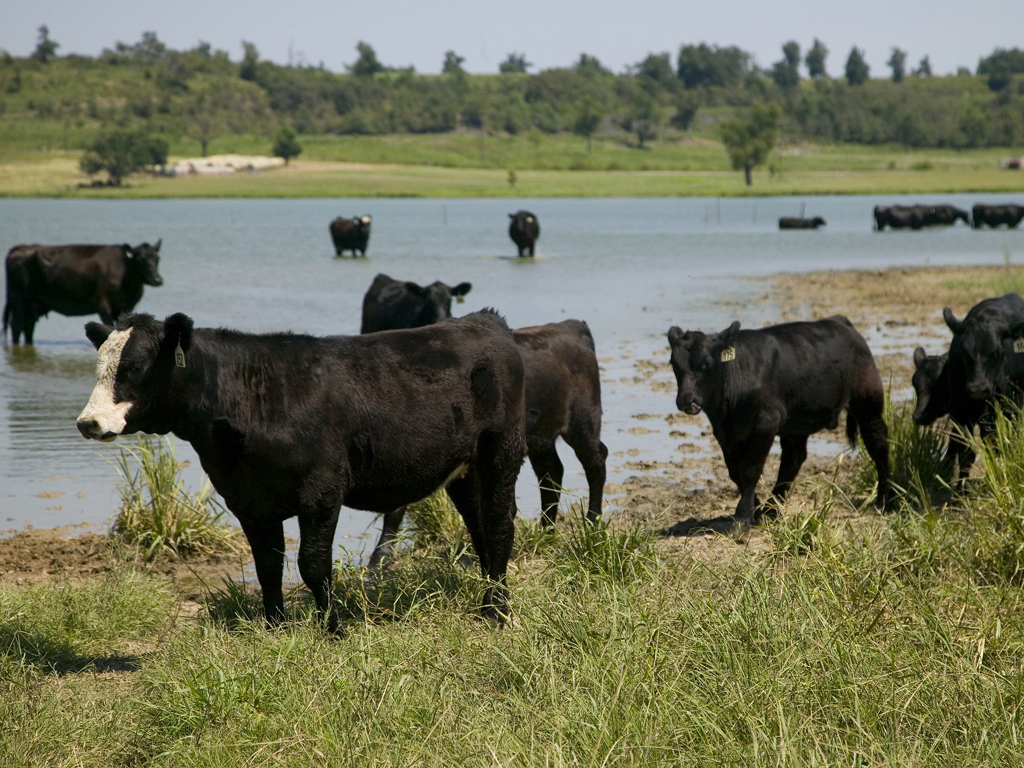
As the summer temperatures climb, Kansas State University extension veterinarian A.J. Tarpoff says water for livestock is the first priority. | Download this photo.
K-State veterinarian urges producers to plan for animal heat stress
Tarpoff says water is just one part of the equation
July 18, 2019
MANHATTAN, Kan. — Compared to recent years, Kansas’ weather has been mostly nice to the state’s cattle producers this summer. That’s about to change.
Kansas State University beef veterinarian A.J. Tarpoff is sounding the bells for livestock producers to take some extra measures to protect their herds during a stretch of days in which temperatures are forecast to top 100 degrees across the state.
“Water, water and lots of water,” said Tarpoff, who noted that the beef industry loses an estimated $369 million each year due to the effects of heat stress. “Whenever we have a heat stress event, that is the most essential nutrient for animals, times five.
“I say, ‘times five’ because the question always comes up about how much water do cattle need, and the answer is that they need five times the amount of water that they are taking up in dry matter.”
For a cow that is consuming 30 pounds of dry matter, that comes out to about 20 gallons per day. Multiply that by the number of cattle in an operation, and the need for water grows exponentially.
Tarpoff said cows try to cool themselves by panting heavily (evaporative cooling), and somewhat by sweating – though they are inefficient sweaters compared to humans. Cows accumulate a heat load during the day and rely on cooler, nighttime temperatures for relief.
Producers can aid in cooling not only by providing more water, but also by changing some of their management strategies during the hottest days.
For example, Tarpoff notes, producers should consider providing most of the cattle’s feed later in the day, as much as 70 percent. Doing so will help to reduce digestive heat, or the heat that accumulates when cattle eat.
“This time of year, we may be providing that ration at 6 or 6:30 in the evening so we can push back that digestive heat load into the cooler hours of the night,” Tarpoff said. “That can make a big impact on how much these animals deal with during the heat of the day.”
Producers should also try to avoid lower quality straw hay or other foods that are fibrous, which create more heat in the animal’s rumen. Feedlot rations and lush green grass are better options for helping animals control digestive heat, Tarpoff said.
In feedlots or other confined settings, producers should provide plenty of water and shade (if available), and use sprinklers to cool pen floors. Tarpoff said they also should minimize handling of animals because the more they have to move, the more heat they produce.
The Kansas Mesonet Network at Kansas State University maintains a Cattle Comfort Index that combines the effect of temperature, humidity, wind and solar radiation. Tarpoff said it’s an excellent online source for producers to monitor when making plans for heat and potential nighttime cooling.
The Cattle Comfort Index is available online at http://mesonet.k-state.edu/agriculture/animal.

